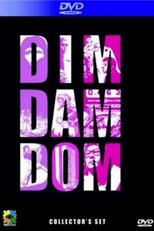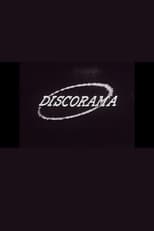
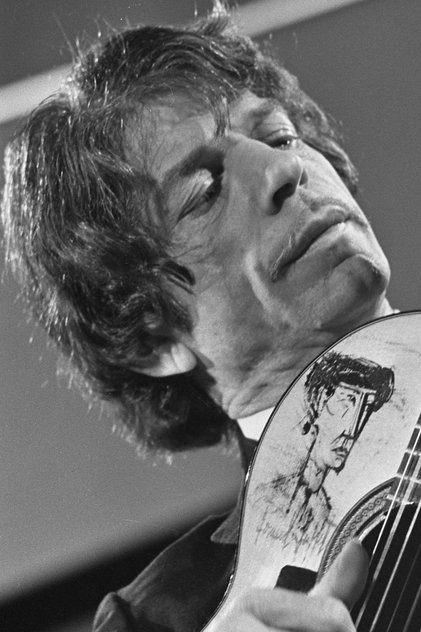
Manitas De Plata
Born: August 7, 1921
Died: November 5, 2014
in Sète, Hérault, France
Died: November 5, 2014
in Sète, Hérault, France
Ricardo Baliardo (7 August 1921 – 5 November 2014), better known as Manitas de Plata, was a flamenco guitarist of Spanish Gitano descent born in southern France. Despite achieving worldwide fame, he was criticized for not following certain rhythmic rules (compás) that are traditional in flamenco.
Baliardo was born in a gypsy caravan in Sète, southern France. He became famous by playing each year at the Saintes-Maries-de-la-Mer gypsy pilgrimage in the Camargue, where he was recorded live by Deben Bhattacharya.
Manitas de Plata ("Little Hands of Silver" in Spanish) only agreed to play in public ten years after the death of Django Reinhardt. One of his recordings earned him a letter from Jean Cocteau acclaiming him as a creator.
Upon hearing him play at Arles in 1964, Pablo Picasso is said to have exclaimed "that man is of greater worth than I am!" and proceeded to draw on the guitar.
De Plata garnered fame in the United States only after a photography exhibition in New York, organized by his friend Lucien Clergue. He had recorded his first official album in the chapel of Arles in France, in 1963, for the Phillips label. It was later re-released, in 1967, by the Connoisseur Society label and sold through the Book of the Month Club. This was a popular LP that brought him to the attention of an American audience. An American manager obtained a booking for him to play a concert in Carnegie Hall in New York on November 24, 1965.
He toured the world from 1967, and recorded discs. He played with the dancer Nina Corti. In 1968 he played at the Royal Variety Performance in London. He toured Australia in September 1972 supported by Los Baliardos (Hippolyte Baliardo, Manero Baliardo, José Reyes, Ricardo Bissaro). His Sevillana was included in Scorsese's After Hours (1985) soundtrack.
De Plata was the uncle of Jacques, Maurice, and Tonino Baliardo and cousin to Paul, François (Canut), Patchaï, Nicolas and André Reyes (the sons of his cousin, flamenco artist José Reyes (1928-1979), all members of the Catalan Rumba band Gipsy Kings. Australian multi-instrumentalist Chris Freeman, his student in 1971, acknowledged de Plata's influence and teachings.
Statue of Manitas de Plata in front of the Montpellier City Hall.
De Plata died in a retirement home in Montpellier on 6 November 2014. The cause of death was not disclosed, although it was reported that de Plata had been in poor health since suffering a severe heart attack in April 2013.
Many members of his own family were also well known flamenco musicians, including his younger brother Hippolyte Baliardo (1928-2009), and his eldest son Manero Baliardo (1940-2012). Another son, Bambo Baliardo, is still an active musician and performer as of 2015.
Source: Article "Manitas de Plata" from Wikipedia in English, licensed under CC-BY-SA 3.0.
Baliardo was born in a gypsy caravan in Sète, southern France. He became famous by playing each year at the Saintes-Maries-de-la-Mer gypsy pilgrimage in the Camargue, where he was recorded live by Deben Bhattacharya.
Manitas de Plata ("Little Hands of Silver" in Spanish) only agreed to play in public ten years after the death of Django Reinhardt. One of his recordings earned him a letter from Jean Cocteau acclaiming him as a creator.
Upon hearing him play at Arles in 1964, Pablo Picasso is said to have exclaimed "that man is of greater worth than I am!" and proceeded to draw on the guitar.
De Plata garnered fame in the United States only after a photography exhibition in New York, organized by his friend Lucien Clergue. He had recorded his first official album in the chapel of Arles in France, in 1963, for the Phillips label. It was later re-released, in 1967, by the Connoisseur Society label and sold through the Book of the Month Club. This was a popular LP that brought him to the attention of an American audience. An American manager obtained a booking for him to play a concert in Carnegie Hall in New York on November 24, 1965.
He toured the world from 1967, and recorded discs. He played with the dancer Nina Corti. In 1968 he played at the Royal Variety Performance in London. He toured Australia in September 1972 supported by Los Baliardos (Hippolyte Baliardo, Manero Baliardo, José Reyes, Ricardo Bissaro). His Sevillana was included in Scorsese's After Hours (1985) soundtrack.
De Plata was the uncle of Jacques, Maurice, and Tonino Baliardo and cousin to Paul, François (Canut), Patchaï, Nicolas and André Reyes (the sons of his cousin, flamenco artist José Reyes (1928-1979), all members of the Catalan Rumba band Gipsy Kings. Australian multi-instrumentalist Chris Freeman, his student in 1971, acknowledged de Plata's influence and teachings.
Statue of Manitas de Plata in front of the Montpellier City Hall.
De Plata died in a retirement home in Montpellier on 6 November 2014. The cause of death was not disclosed, although it was reported that de Plata had been in poor health since suffering a severe heart attack in April 2013.
Many members of his own family were also well known flamenco musicians, including his younger brother Hippolyte Baliardo (1928-2009), and his eldest son Manero Baliardo (1940-2012). Another son, Bambo Baliardo, is still an active musician and performer as of 2015.
Source: Article "Manitas de Plata" from Wikipedia in English, licensed under CC-BY-SA 3.0.
Movies for Manitas De Plata...


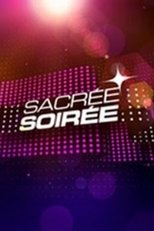


Title: Numéro un
Character: Self
Released: April 5, 1975
Type: TV
A French variety show.




Title: Les Rendez-vous du dimanche
Character: Self
Released: January 12, 1975
Type: TV
A talk show presented by Michel Drucker

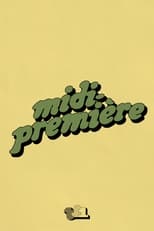
Title: Midi Première
Character: Self
Released: January 6, 1975
Type: TV
Midi Première is a French variety show presented by Danièle Gilbert, directed by Jacques Pierre and broadcast from January 6, 1975 until January 1, 1982 on TF1. The program was generally broadcast between 12:15 p.m. and 12:55 p.m., then giving way to the 1:00 p.m. TV news. However, the broadcast schedule could change, depending on the guests, and the setting where the recording of the program was shot. Certain performances by artists who have become cult like the one where Ringo jostles with a demonstrator in interpretation (1977), that of Dalida with the title There is always a song with the soundtrack that does not start, twice, at the right speed (1978), Claude François and his Clodettes, who, in the provinces, are unable to join "the set" in order to interpret his song, the latter being taken by the crowd of delirious fans (summer 1977) . The group Supertramp performed there with the title "Dreamer" on March 8, 1975.


Title: Caravan to Vaccarès
Character: Ricardo
Released: August 8, 1974
Type: Movie
American Neil Bowman is traveling through France when he meets British photographer Lila. They are hired by French land owner Duc de Croyter to escort a Hungarian scientist to New York. But they soon realize that the job is not a cushy number, and have to deal with a gang of kidnappers who will stop at nothing to get their hands on the scientist


Title: Flash Love
Character: Manitas de Platas
Released: October 4, 1972
Type: Movie
Jeanne, a little secretary dreaming of love, meets Alain, a reporter-photographer with a major daily newspaper. He takes her along on his professional nocturnal activities, during which she meets a host of celebrities. One evening, Alain takes photos of the kidnapping of a diplomat, and is followed by a mysterious individual who wants the film back. Alain falls in love with Jeanne. Their embrace is passionate. During the night, he manages to get rid of the follower, then receives a new assignment: to leave for Colombia as soon as possible. He sacrifices his love for Jeanne to his ambition, and she waits in vain for him before returning to her dull life.







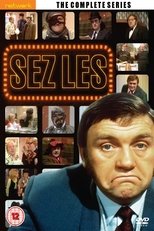
Title: Sez Les
Released: April 30, 1969
Type: TV
Sez Les was a British comedy sketch show that starred Les Dawson, produced by Yorkshire Television, airing on ITV from 1969 to 1976. Roy Barraclough also joined from series four and would go on to become Dawson's most recognisable sidekick. The two most notably appeared together in drag as characters Cissie and Ada. John Cleese, who had quit the Monty Python team's television series, was also present from 1974 in two complete seasons. Other cast members included Norman Chappell, Brian Glover, Brian Murphy and Kathy Staff. Music was provided by Syd Lawrence and his orchestra.



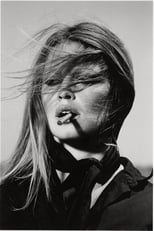
Title: Spécial Bardot
Released: June 8, 1968
Type: Movie
And the image created the myth... Bardot as a brunette, blonde or redhead. Bardot in thigh-high boots, mini-dress or swimsuit, Bardot in London, at La Madrague or on a Harley... In all her states, BB sings with Gainsbourg and Sacha Distel: "Bonnie and Clyde", "Comic strip", "Mister Sun"... Reichenbach's camera sublimates the icon.

